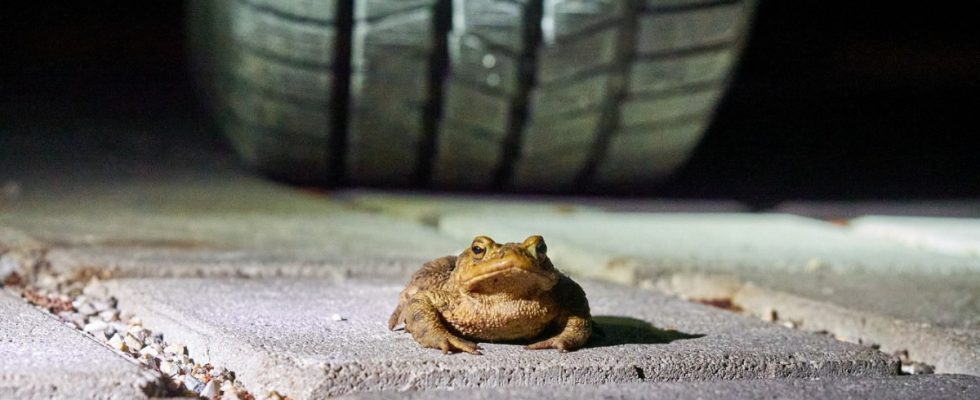There are no roads in the world of toads and frogs. Evolution did not prepare amphibians for another animal, man, to pave parts of the landscape and build cars faster and deadlier than any natural predators known to animals.
During the amphibian migration, which is currently in full swing again, countless amphibians are run over every spring. At the moment, mainly common toads and common frogs are on the move. The animals head straight for a body of water where they can lay their spawn – regardless of whether there is a road on their route or not. “It even happens that male common toads sit in the middle of the road and look out for females because they have a good overview there,” says Andreas Zahn, who is responsible for species protection at the Bund Naturschutz in Bayern. If you find a female, jump on its back and don’t let go until it has carried you to the water.
In order to save as many animals as possible, conservationists mobilize an army of volunteers every spring to help the toads and frogs get across the streets unharmed: They block access with an “amphibious fence”, usually a strong plastic sheet, and sink them at regular intervals bucket in the ground. When the animals realize that there is no straight ahead, they hop to the left or right along the barrier and sooner or later fall into one of the buried buckets. The amphibian rescuers check the buckets at least once a day, count the animals, determine the species and then bring the amphibians safely to the other side of the road or even directly to the spawning waters.
“In recent years, fewer and fewer animals have ended up in the buckets,” says Andreas Zahn. The number of common toads in Bavaria has fallen by more than a third since 2011. The drop in the number of common frogs is even more dramatic: the amphibian rescuers collected around 40 percent fewer animals in 2021 than in 2018.
The main reasons for the sharp decline are firstly: the loss of habitat – there are fewer and fewer wet meadows or moors throughout Germany in which the animals can live. And second: climate change. Heat and drought dry up spawning waters, causing many tadpoles to die. Even young animals that have to eat a lot have little chance of surviving in hot and dry summers: If they stay in cool hiding places, they starve; if they venture outside to forage, they dry up.
Pathogens such as fungi and viruses, which are the main cause of amphibian mortality in many countries, have so far not played a major role in Germany. An exception are fire salamanders, which are threatened by a deadly fungus introduced by exotic animals for terrariums.
Unlike many other amphibians, common frogs and common toads are not yet threatened with extinction. Andreas Zahn is particularly fascinated by the toads: “They look at you,” he says. And they have “beautiful bronze eyes”.

